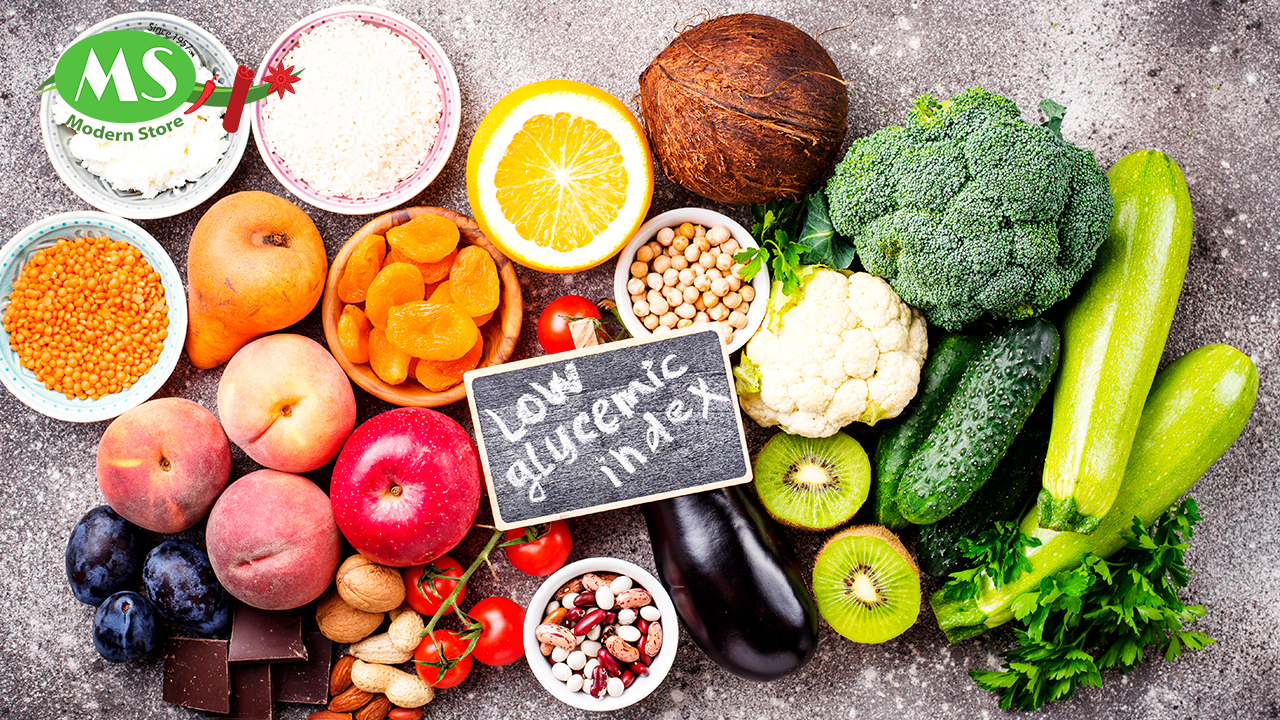Managing blood sugar levels is crucial for individuals with diabetes or those looking to maintain optimal health. In this blog post, we delve into the world of low-glycemic index (GI) foods and how they play a significant role in controlling blood sugar levels. We explore how these foods can help transition from blood sugar spikes to stability, promoting overall well-being and diabetes management.
Understanding the Glycemic Index:
First, we lay the foundation by explaining the concept of the glycemic index. The glycemic index measures how carbohydrates in food affect blood sugar levels. We clarify the difference between high-GI and low-GI foods, highlighting that low-GI foods cause a gradual and moderate increase in blood sugar, whereas high-GI foods lead to a rapid spike.
When it comes to glycemic index (GI) numbers, lower values are generally considered better as they indicate a slower and more gradual increase in blood sugar levels. Higher GI values, on the other hand, indicate a faster and more significant rise in blood sugar levels after consuming a particular food. Here’s a general breakdown:
A) Low GI (55 or less): These foods are considered favorable for blood sugar control as they have a minimal impact on blood sugar levels. They cause a slow and steady rise in blood sugar, providing sustained energy and promoting overall health. Examples include non-starchy vegetables, most fruits, whole grains like quinoa and brown rice, legumes, and certain dairy products.
B) Medium GI (56 to 69): Foods with medium GI values are digested and absorbed at a moderate pace, causing a moderate increase in blood sugar levels. While they are not as desirable as low-GI foods, they can still be incorporated into a balanced diet in moderation. Examples include some fruits (such as pineapples and ripe bananas), whole wheat bread, and certain types of rice.
C) High GI (70 or higher): These foods are quickly digested and cause a rapid rise in blood sugar levels. They are typically best avoided or consumed sparingly, especially for individuals with diabetes or those looking to manage blood sugar. High-GI foods include white bread, white rice, sugary cereals, baked goods, candies, and processed snacks.
The Impact of Low-Glycemic Index Foods:
Next, we dive into the core of our discussion, emphasizing how low-GI foods contribute to blood sugar control. We highlight the following key points:
Slower Digestion and Absorption: Low-GI foods contain complex carbohydrates that take longer to break down and are absorbed more slowly by the body. This results in a more gradual release of glucose into the bloodstream, preventing sudden blood sugar spikes.
Sustained Energy Release: Low-GI foods provide a steady and sustained release of energy over an extended period. This steady supply of glucose helps maintain stable blood sugar levels and prevents energy crashes.
Increased Satiety and Weight Management: Low-GI foods tend to be rich in fiber, which promotes feelings of fullness and reduces the likelihood of overeating. By keeping hunger at bay and supporting weight management, low-GI foods indirectly contribute to blood sugar control.
Improved Insulin Sensitivity: Consistently consuming low-GI foods may enhance insulin sensitivity in individuals with diabetes. This can lead to better utilization of insulin and improved blood sugar regulation.
Incorporating Low-Glycemic Index Foods:
In this section, we explore various food categories that fall within the low-GI range, such as non-starchy vegetables, legumes, whole grains, nuts, seeds, berries, lean proteins, and healthy fats. Here is a list of various types of food along with their respective glycemic index (GI) values.
Vegetables:
Broccoli: GI = 15
Spinach: GI = 15
Kale: GI = 15
Bell Peppers: GI = 15
Cauliflower: GI = 15
Green Beans: GI = 15
Zucchini: GI = 15
Cabbage: GI = 15
Fruits:
Cherries: GI = 22
Grapefruit: GI = 25
Apples: GI = 38
Pears: GI = 38
Oranges: GI = 42
Plums: GI = 39
Peaches: GI = 42
Strawberries: GI = 40
Grains:
Quinoa: GI = 53
Brown Rice: GI = 50
Whole Wheat Bread: GI = 50-75 (depending on the brand and type)
Oats: GI = 55
Barley: GI = 25-36 (depending on the type)
Bulgur: GI = 48
Whole Wheat Pasta: GI = 37-50 (depending on the brand and type)
Rye Bread: GI = 50-70 (depending on the brand and type)
Dairy Products:
Milk (whole or skim): GI = 30-39
Yogurt (plain, non-fat): GI = 14
Greek Yogurt (plain, non-fat): GI = 11
Beans and Peas :
Tofu: GI = 15
Peanuts:: GI = 21
Kidney Beans: GI = 25
Black Beans: GI = 30
SplitPeas: GI = 32
Lentils: GI = 41
Black Eyed Beans: GI = 44
Chickpeas: GI = 47
It’s important to note that GI values can vary based on factors such as ripeness, cooking methods, and food combinations. The values provided above are approximate. Additionally, portion sizes and individual differences can also impact blood sugar response. Consulting a registered dietitian or healthcare professional for personalized guidance is recommended.
We conclude by emphasizing the importance of low-GI foods in managing blood sugar levels and promoting overall health. By choosing these foods over high-GI alternatives, individuals can transition from blood sugar spikes to stability.
At Modern Store, we believe that everyone deserves to live a healthy life. We are located at your convenient location in Kuala Lumpur (Old Outlet and New Outlet) Malaysia, you can buy all your Indian groceries, vegetables and fruits under one roof. Modern Store Brickfields has now partnered with TheBig3 Online Indian Grocery to bring our products online. You can now shop for our products at our partnered online store – www.thebig3grocery.com.my and we will deliver directly to your homes. Stay Fit! Stay Healthy!
Whatsapp : 014 3171 954
Now Experience hassle-free grocery shopping with Modern Store – Order Online via Official WhatsApp. Free Delivery within Brickfields. Minimum Order RM 50.
To know more:
Like Us on
Facebook: Modern Store Indian Grocery
Instagram: modernstorekl








Leave A Comment